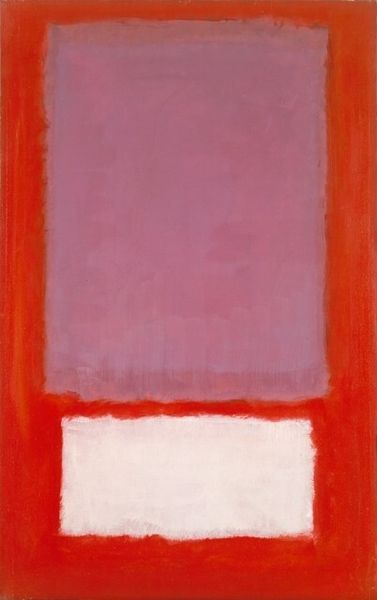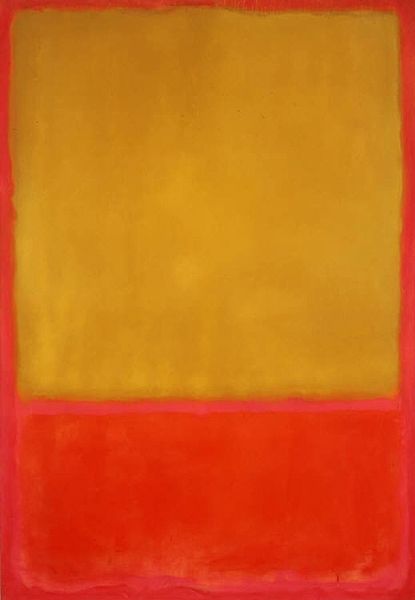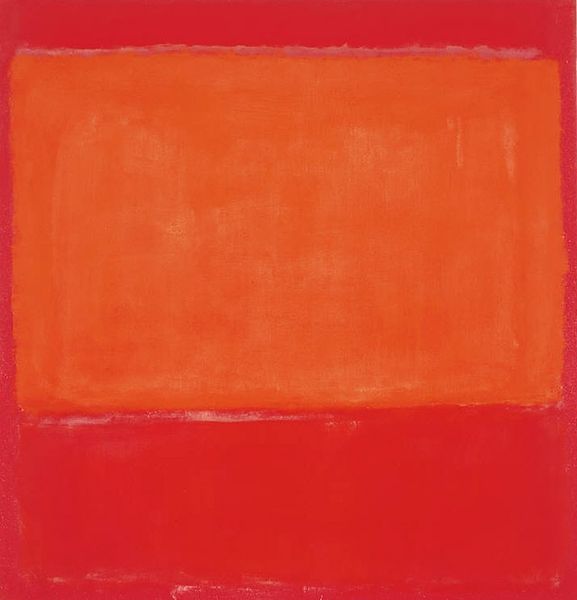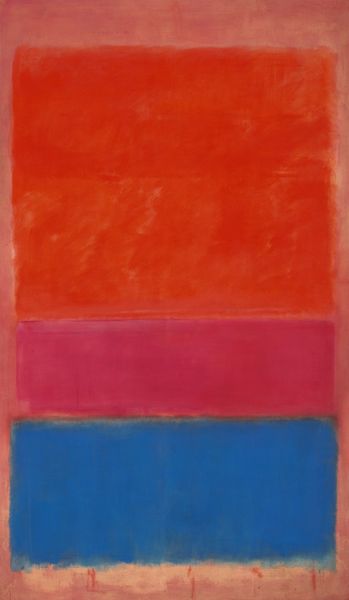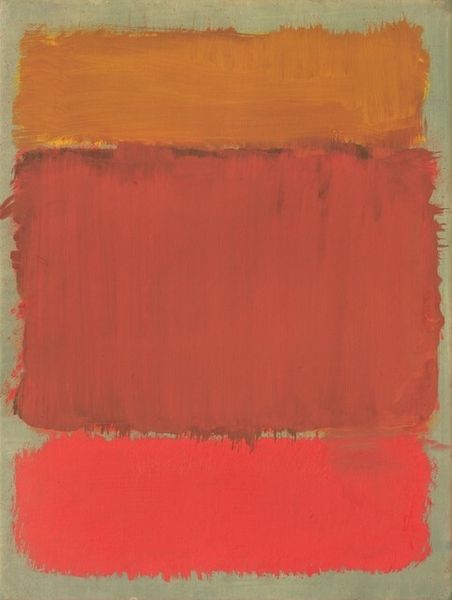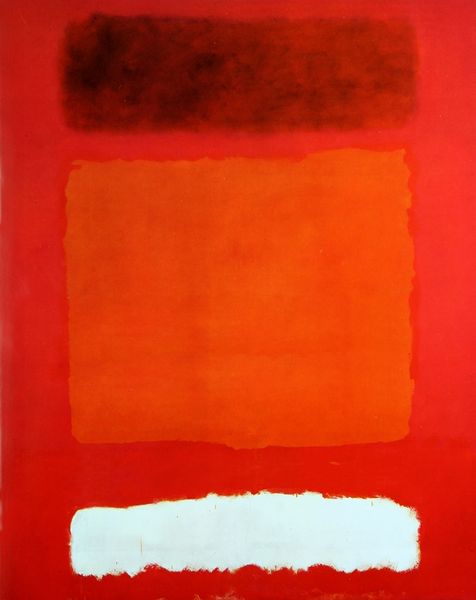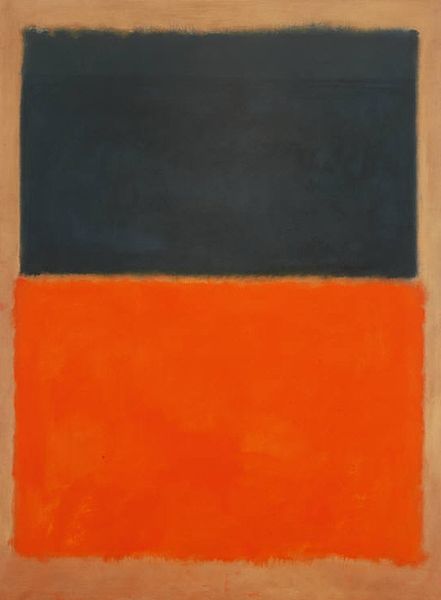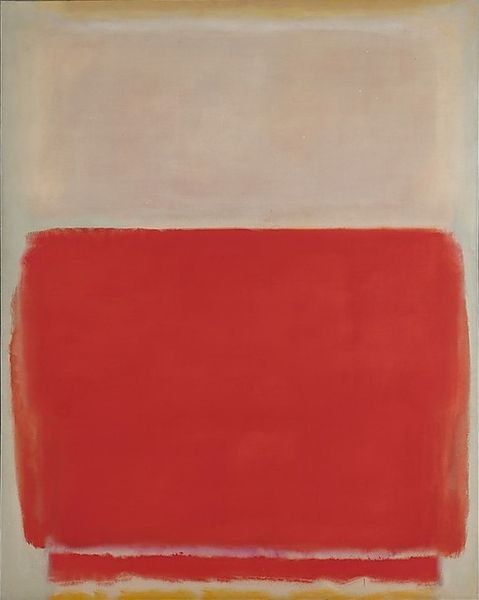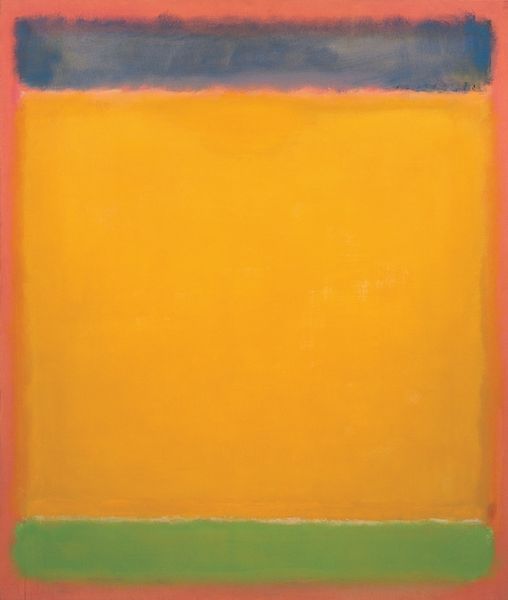
painting, oil-paint
#
abstract-expressionism
#
abstract expressionism
#
painting
#
oil-paint
#
colour-field-painting
#
abstraction
#
modernism
Dimensions: overall: 204.2 x 171.7 cm (80 3/8 x 67 5/8 in.)
Copyright: National Gallery of Art: CC0 1.0
Curator: Before us hangs Mark Rothko’s "Red Band," painted in 1955. What's your initial reaction to this work? Editor: It vibrates with an unsettling warmth, doesn't it? The colors are seemingly simple, yet they hum with a barely restrained energy, as if ready to burst from the canvas. Curator: Rothko, of course, situated himself within a period rife with anxiety concerning postwar identity, its representation, and meaning. In looking at a work like this, I can't help but think about the socio-political anxieties projected into this raw emotional landscape. The question of human existence really seems present here. Editor: Indeed, it is easy to imagine how "Red Band," crafted with oil paint, carries the weight of its making. Look at the translucent layers. He wasn’t interested in hiding the labor or materiality behind it, but rather emphasizing them. The scale certainly commands our attention, placing us in direct communion with its creation. Curator: Consider how gender roles were evolving; think about the rise of civil rights. "Red Band" embodies a departure from conventional representation, a rejection of prescribed societal norms, allowing the viewer a sense of self-determination in how one might find meaning within such abstracted and deeply personal, aesthetic registers. Editor: But Rothko’s methods weren’t accidental. Each layer carefully chosen and meticulously applied in a deliberate and protracted physical endeavor that infuses the work. The uneven application adds this depth. His artistic decisions mirror industrial processes; even as "high art," we see something mass produced in a capitalist mode here too. Curator: Well, both modes might meet; perhaps he sought to capture the human condition through these broad swathes of pigment while reacting to a sense of mechanization creeping into society. Viewing "Red Band" can, for many, bring up existential and perhaps even spiritual questioning; but viewing art also raises crucial political issues surrounding social equality, selfhood, and collective historical accountability. Editor: Perhaps, the tension is generative; there's space for questioning. The painting process emphasizes art's potential for reflecting labor and broader economic forces as it simultaneously challenges any one true reading of the self. The means of artistic production meet critical identity concerns in its unfolding textures. Curator: It makes me reconsider what I think I know about abstraction; the encounter can be surprisingly visceral, forcing reconsideration of the history and future, and perhaps more acutely, the "now," through a uniquely affective encounter. Editor: For me, the painting exemplifies a fusion of intellectual concept and visceral materiality, urging us to contemplate production as much as potential interpretation; the artistic touch lingers in its surfaces.
Comments
No comments
Be the first to comment and join the conversation on the ultimate creative platform.
